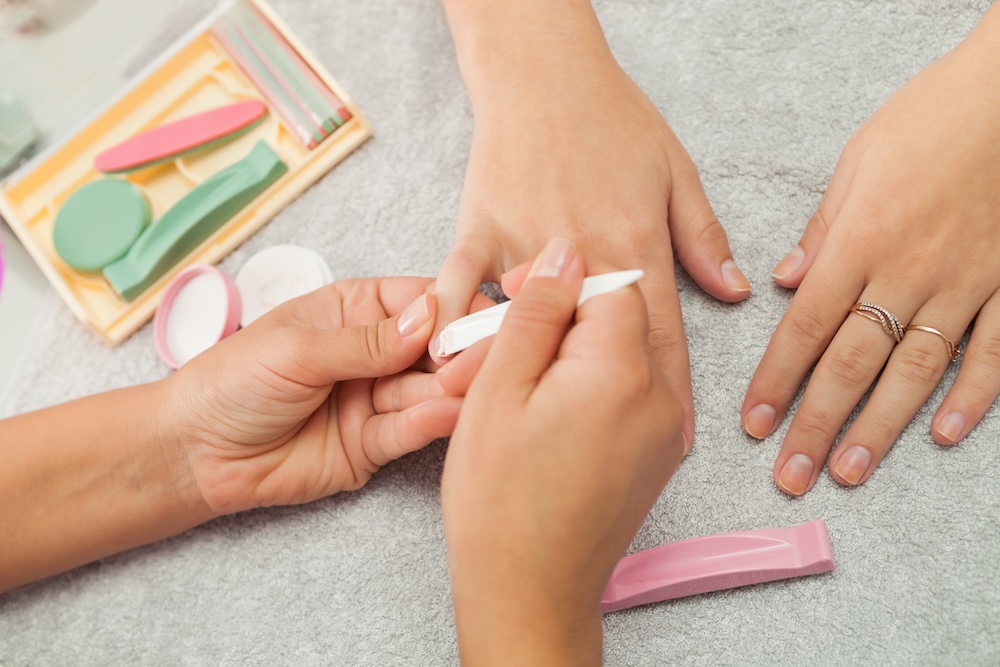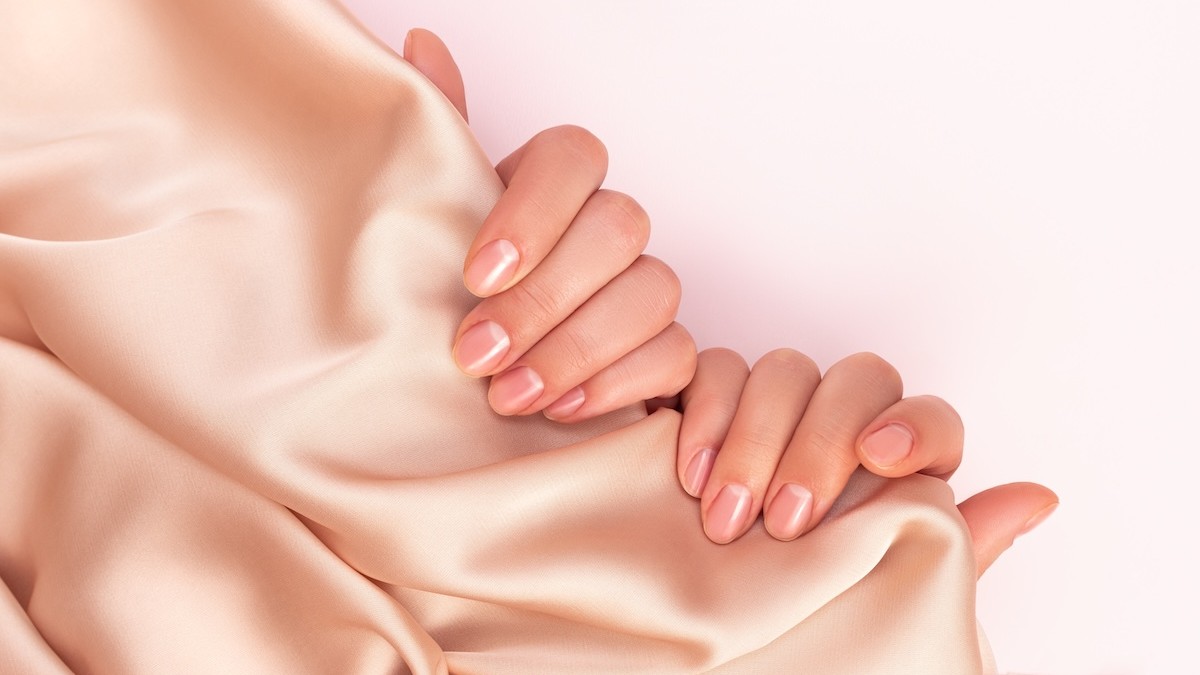Japanese manicures are trending in salons thanks to their natural ingredients, high-shine results and nail-strengthening benefits
Here’s everything beauty professionals need to know.
What is a Japanese manicure?
Known for its natural shine and restorative benefits, the Japanese manicure has quickly become a go-to option for clients who want a break from gel polish without compromising on a polished, groomed look.
“It’s a great alternative for those who are tired of gel polish and want to strengthen their natural nails. It's especially ideal for pregnant women. The Japanese manicure is a treatment for the nail plate that includes natural ingredients like magnesium, calcium, beeswax and royal jelly. The product we use is called P.Shine, though most people simply refer to it as a Japanese manicure,” explain Yana Galiyeva and Maria Sharova, founders of the So.Shell salon chain.
Unlike a traditional manicure, the focus here is on restoring the nail plate using nutrient-rich powders and pastes that are gently massaged and buffed into the nail.
How does a Japanese manicure differ from a standard manicure?
While the shaping and cleaning steps remain recognisable, the treatment changes order and purpose.
“The manicure process itself – the cleaning and shaping – is the same as a classic manicure, but the order of steps is different. In a Japanese manicure, the treatment comes first: the nails are polished using the P.Shine formula, and only then is the manicure itself completed,” Galiyeva explains.
This reversal ensures the nail plate absorbs the beneficial ingredients before any finishing touches.
What results can clients expect?
The finish is what has made Japanese manicures so shareable on social media: a soft, healthy, glossy glow.
Sharova says, “Clients can expect a natural, healthy-looking shine that resembles the popular ‘soap nail’ effect, but without any gel polish. This shine comes entirely from the treatment. Beyond the aesthetic result, it also significantly strengthens the nail plate.”
Because the shine is the result of the product being buffed into the nail rather than a lacquer applied on top, it wears away only as the nail grows out.

Who is the Japanese manicure best suited for?
Japanese manicures appeal to clients who want a more natural approach to nail care or need a break from gels.
“It’s perfect for pregnant women and for anyone taking a break from regular nail polish or gel polish. It allows the nails to recover while still looking polished and well-groomed,” explains Sharova.
It’s also suitable for clients with weakened, peeling or thin nails looking for a strengthening service.
Are there misconceptions about Japanese manicures?
As the trend spreads, so do assumptions – many of which miss the mark.
Galiyeva says, “There are misconceptions about Japanese manicures – many people think the shine is achieved with chemicals or polish, but in fact, there are no synthetic components. It's 100% natural, and the shine doesn’t wash off – it stays on the nail until it naturally grows out.”
This formulation is central to its appeal, especially among ingredient-conscious consumers.
Why Japanese manicures are trending in the natural nail movement
The surge in demand is part of a wider shift toward natural nail health and minimalistic beauty.
“Japanese manicures are both beautiful and beneficial. They enhance the look of natural nails while also improving their health – a win-win,” comments Sharova.
Both Galiyeva and Sharova have also seen a shift in clients’ priorities: “More clients are becoming aware of the benefits of keeping their nails natural and healthy.”
This aligns with the broader “clean” beauty conversation which is still popular amongst some consumers.
“Japanese manicures align perfectly with the ‘clean’ beauty movement – the treatment uses only natural ingredients. The long-lasting shine is purely from the formula, not a polish,” Galiyeva says.
How nail techs can train in Japanese manicures
For professionals already confident in manicure fundamentals, this treatment is accessible and quick to learn.
“An experienced nail tech can start offering the service after completing an online course. It's a straightforward technique if you’re already skilled in manicure basics.”
Training typically focuses on understanding the system, correct buffing techniques and service flow.

Tools and products required
“You’ll need the kit, which includes a suede buffer, plus your standard manicure tools,” says Sharova.
The hallmark of the service is its soft suede buffer, used to work natural pastes and powders into the nail to create the signature shine.
How to add Japanese manicures to your salon menu
For salons wanting to expand their natural nail offering, the duo says that Japanese manicures work best as a standalone strengthening service.
“Japanese manicure is a standalone service and shouldn’t be combined with gel polish – the product prevents the gel from adhering properly. However, if a client wants organic nail strengthening and to wear gel, we offer an IBX system designed specifically for that purpose.”
This makes it easy to guide clients toward the right treatment for their goals and nail condition.
Does offering Japanese manicures help attract new clients?
According to the So.Shell founders, yes – particularly among those stepping away from gels.
“It helps attract clients who prefer not to use gel polish but still want their nails to look neat and polished,” says Galiyeva.
Salons can also market it as a restorative, health-first treatment for clients returning after long-term enhancements.
What professionals love most about the treatment
For many techs, the ritual is part of the appeal of Japanese manicures.
Galiyeva says, “We love the ritual of it. The application process feels very special – the product comes in elegant, doll-like jars, and it’s a two-step treatment: first, massaging the natural formula into the nails, and then buffing with a soft pink suede buffer that contains pearl powder and royal jelly. It’s both therapeutic and beautiful.”
This sensory, almost spa-like experience is a big part of why clients rebook.
The bottom line
Japanese manicures offer salons and nail techs a highly marketable, natural, ingredient-led treatment that strengthens the nail plate while delivering a long-lasting, chemical-free shine.
Whether your clients want to take a break from gels, embrace natural beauty or simply enjoy a more holistic nail ritual, this service provides a modern alternative that supports nail health without compromising aesthetic results.
You might also like:



